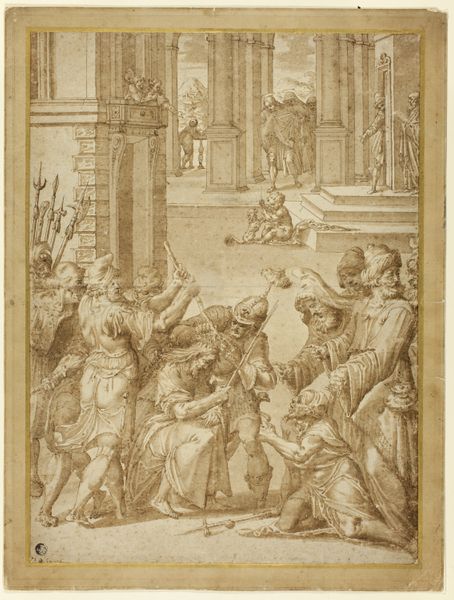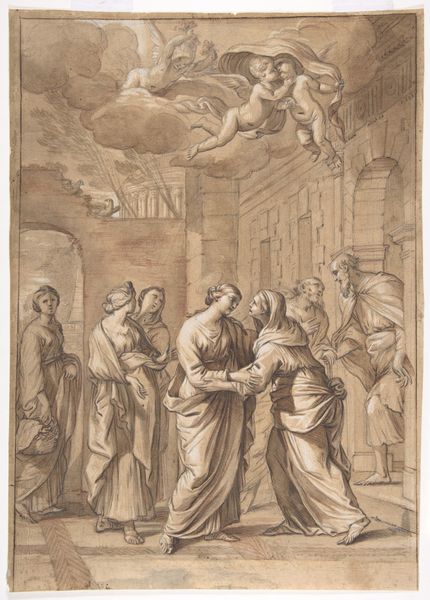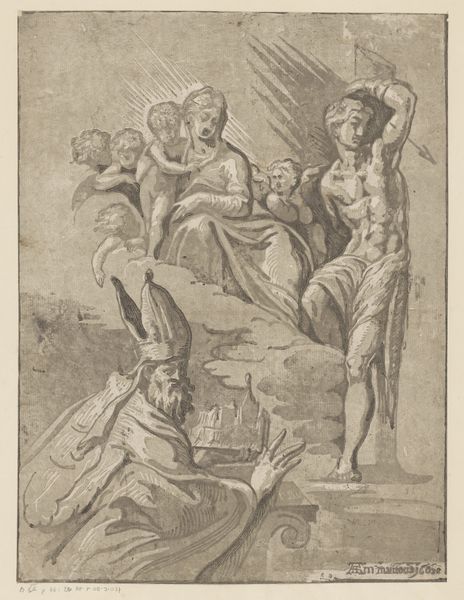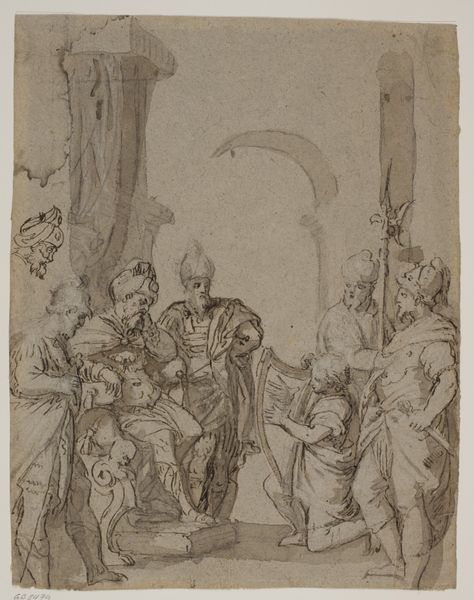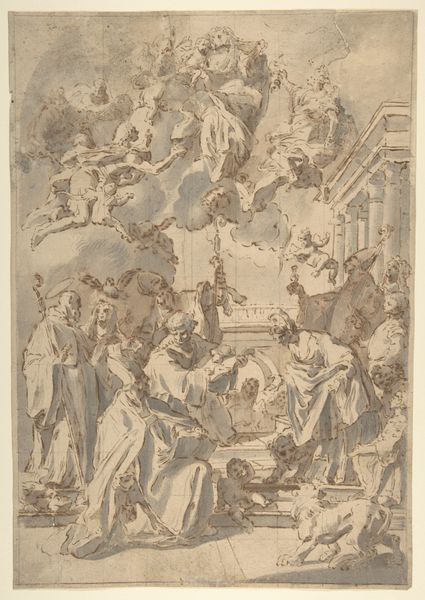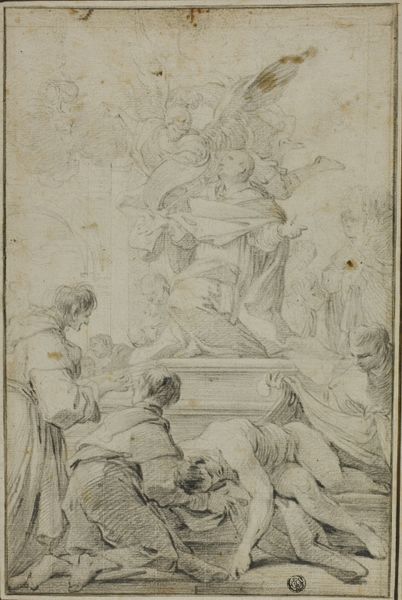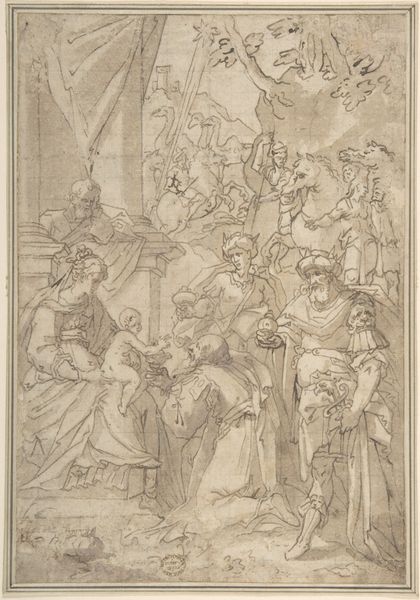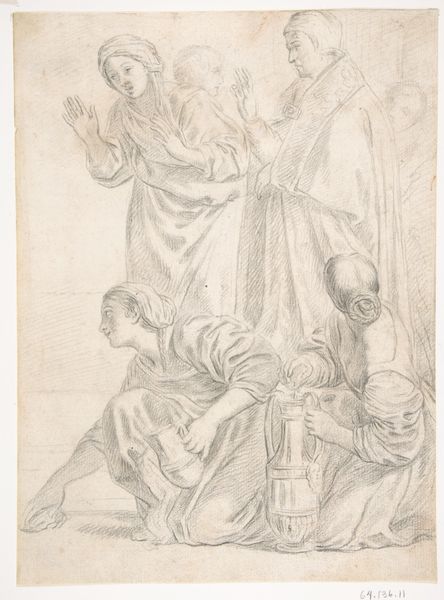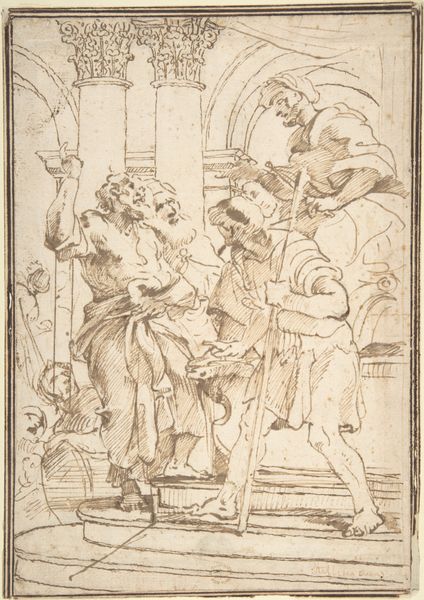
Christ Healing the Sick at the Pool of Bethesda c. 17th century
0:00
0:00
drawing, print, paper, ink, chalk, pen, charcoal, black-chalk
#
drawing
#
narrative-art
# print
#
classical-realism
#
charcoal drawing
#
figuration
#
paper
#
oil painting
#
ink
#
chalk
#
pen
#
charcoal
#
history-painting
#
academic-art
#
italian-renaissance
#
black-chalk
Dimensions: 372 × 214 mm
Copyright: Public Domain
Editor: This work is "Christ Healing the Sick at the Pool of Bethesda," a 17th-century drawing by Paolo Veronese at the Art Institute of Chicago, rendered with pen, ink, charcoal, and chalk on paper. There’s something incredibly dynamic about the composition; all of the figures are actively engaged. How do you interpret this piece? Curator: It is essential to consider the distribution of tonal values. Note the strategic placement of the darker areas, especially around the central figures. This contrast functions to guide the viewer’s eye, creating a visual hierarchy. Observe, too, the architectural background with the columns. Do you find a similar technique reflected there? Editor: Yes, the artist contrasts the dark arches in the background to accentuate the light source. The details in the columns direct your gaze toward the primary subject matter. Curator: Precisely. The strategic placement of these linear forms reinforces the overall structure of the work. Consider also the artist’s command of line—thin and precise in some areas, broader and more expressive in others. This variation imbues the figures with a sense of vitality. How does this contribute to the mood? Editor: It gives the drawing a layered depth and brings an added level of intricacy that emphasizes movement and emotions within the narrative. It really pulls you into the story. Curator: A crucial element in any successful narrative depiction. Notice also the materiality of the chalk and ink – their inherent properties exploited to create both volume and texture. The paper's own surface plays a role in the diffusion of light. All are carefully calibrated to work in concert. Editor: Thanks, considering those details provides an expanded understanding of what I’m seeing. It really shows how material choices shape our experience. Curator: Indeed, understanding the mechanics of the image, line, tone, material allows us to apprehend something profound.
Comments
No comments
Be the first to comment and join the conversation on the ultimate creative platform.

